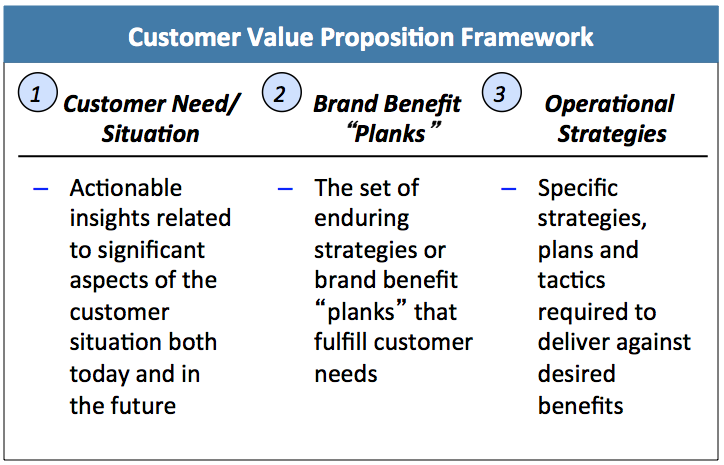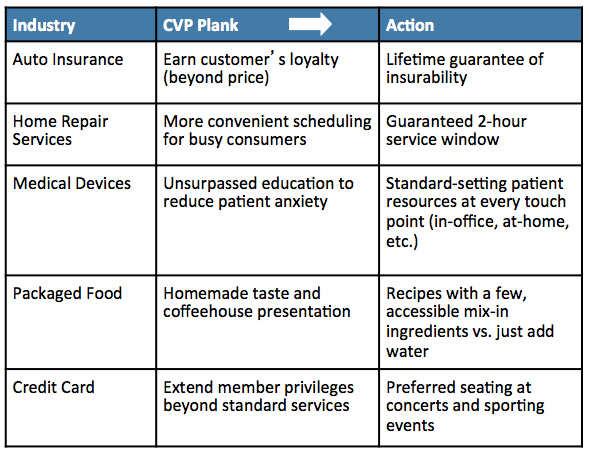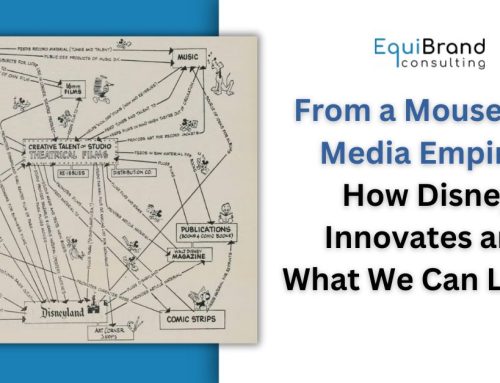The strongest, most enduring brands and businesses result from a disciplined alignment of initiatives against marketplace requirements.
 While a brand strategy is useful to focus the organization against customer requirements, the Customer Value Proposition is necessary to link these brand strategies to business strategies.
While a brand strategy is useful to focus the organization against customer requirements, the Customer Value Proposition is necessary to link these brand strategies to business strategies.
Brand Strategy Statement Limitations
Companies will often spend considerable effort crafting a succinct expression of the brand, though may be left wondering how to put the brand in action. The question becomes: We have a brand statement, now what?
A brand strategy statement alone – whether called a positioning, essence or brand promise – isn’t enough. These statements, by their nature, can be fairly ambiguous, especially when reduced to a few words or phrases.
What’s needed is a Customer Value Proposition, to link the brand and operational strategies, and ensure alignment with marketplace requirements.
Customer Value Proposition Defined
A Customer Value Proposition (CVP) serves to identify the customer-focused operational strategies that are required to deliver against the brand strategy. It puts a brand strategy in relevant business terms, thereby making it easier to define decisions and action plans that will strengthen the brand. The CVP framework consists of three parts:


Brand Benefit “Plank” Examples
A CVP typically consists of four to six brand benefit “planks”. The brand plank briefly defines what benefit can be derived when the product or service is used by core customers. Here are some examples of brand benefit planks and corresponding actions:
ContactThe combination of individual value proposition “planks” comprises the Customer Value Proposition, which provides the basis for delivering a relevant and distinctive offering to target customers.
Benefits of a Relevant and Distinctive CVP
When fully defined and delivered upon, the Customer Value Proposition offers the following benefits:
- Creates a multi-dimensional definition of brand value
- Provides direction to the business and brand – by identifying and owning those benefits on which category decisions are made
- Forces a disciplined approach to resource allocation
- Drives strategies and actions across the organization
- Can drive messaging architecture
For more information on how to go about Linking Brand and Operational Strategies, please contact EquiBrand.



















Follow EquiBrand